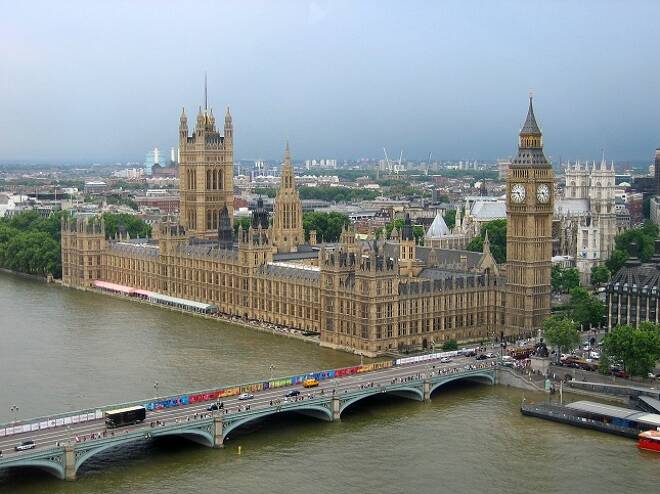Advertisement
Advertisement
RBA Gives the Aussie a Boost, as Focus Shifts to Brexit Debates and the GBP
By:
Better terms of trade gives the Aussie Dollar a boost, with focus shifting the UK's parliament as 5 days of Brexit debate get underway ahead of the 11th's vote.
Earlier in the Day:
It was a quieter session this morning, with economic data released through the Asian session limited to current account figures out of Australia and retail sales numbers out of the UK, neither of which had a material impact on the respective currencies or the markets in general.
Of greater significance through the morning was the release of the RBA’s rate statement, with few expecting the RBA to move on rates.
For the Aussie Dollar, the RBA held rates unchanged at 1.50%, which was in line with market expectations. Salient points from the rate statement including:
- There are some signs of a slowdown in global trade, partly stemming from ongoing trade tensions.
- Growth in China has slowed a little.
- In Australia, the economy is performing well and GDP forecasts remain at 3.5% for this year and next, before slowing in 2020.
- Business conditions are positive and non-mining business investment is expected to increase.
- The economy is supported by higher levels of public infrastructure investment and growth in resource exports.
- Household income growth remains low, while debt levels are high and some asset prices have declined.
- Terms of trade have increased and have been stronger than expected, supporting national income, while most commodity prices have declined recently.
- Outlook for labour market remains positive, with the unemployment rate expected to fall further, supporting the upward trend in wage growth.
- Wage growth is expected to continue, while at a gradual pace.
- Housing market conditions in Sydney and Melbourne have continued to ease, with nationwide measures of rent inflation remaining low, weighing on demand for credit by investors.
- Credit conditions have tightened for some borrowers, with some lenders having a reduced appetite to lend.
- Inflation remains low and stable and is expected to pick up over the next couple of years, though gradual, with the central forecast sitting at 2.25% for 2019 and a touch higher the following year.
The Aussie Dollar moved from $0.73587 to $073675 upon release of the figures, before rising to $0.7369 at the time of writing, a gain of 0.0.5% for the session, the upside coming off the back of the RBA’s positive views on trade terms.
Elsewhere, the Japanese Yen stood at ¥113.32, against the U.S Dollar, the Yen up 0.3% for the session, supported by a pullback in the Asian equity markets, with the Kiwi Dollar up 0.45% to $0.6958, the Kiwi finding support from the RBA’s views on trade terms and the trade war truce between the U.S and China that has weighed on demand for the Greenback.
The Day Ahead:
For the EUR, key stats through the day are limited to employment figures out of Spain that will unlikely have a material impact on the EUR, barring an unexpectedly weak number, with the EUR under near-term pressure over the threat of U.S tariffs on European cars that would materially impact the European’s economic powerhouse, Germany.
Throw in the possible impact of a no-deal Brexit and the Italian coalition government, the upside is looking limited for now, which leaves the EUR susceptible to a pullback, economic data of late having provided little hope of a rebound in the Eurozone economy, in spite of some better than expected manufacturing PMI numbers released on Monday.
At the time of writing, the EUR was up 0.14% to $1.1370, with noise from the Oval Office likely to be the key driver through the day.
For the Pound, economic data is limited to November’s construction PMI that will provide some direction for the Pound, forecasts being Pound negative, through with the parliamentary debate on Theresa May’s Brexit deal kicking off later today, we can expect Brexit chatter to be the key driver through the day.
On the policy front, BoE Governor Carney is scheduled to speak later this morning, any negative commentary towards policy and Brexit likely to weigh.
Early in the day, the UK’s BRC Retail Sales Monitor fell by 0.5% in November, partially reversing October’s 1.3% rise year-on-year, the numbers coming off the back of disappointing retail sales figures for October.
At the time of writing, the Pound was up 0.11% at $1.2739, with Brexit chatter remaining the key driver through the day.
Across the Pond, there are no material stats scheduled for release through the day, leaving the Greenback exposed to FOMC member chatter, with FOMC member Williams scheduled to speak later today, as the markets begin to focus on tomorrow’s FED Chair testimony that could materially weigh on the Dollar.
At the time of writing, the Dollar Spot Index was down 0.23 to 96.812, the downside coming off the back of easing demand for Treasuries and expectations of more dovish chatter from the FED chair tomorrow.
For the Loonie, stats are limited to 3rd quarter labour productivity numbers that will have some influence on the Loonie ahead of tomorrow’s BoC monetary policy decision.
The Loonie was up 0.11% to C$1.3183 against the U.S Dollar at the time of writing, with support coming from the bounce in crude oil prices.
About the Author
Bob Masonauthor
With over 28 years of experience in the financial industry, Bob has worked with various global rating agencies and multinational banks. Currently he is covering currencies, commodities, alternative asset classes and global equities, focusing mostly on European and Asian markets.
Advertisement
